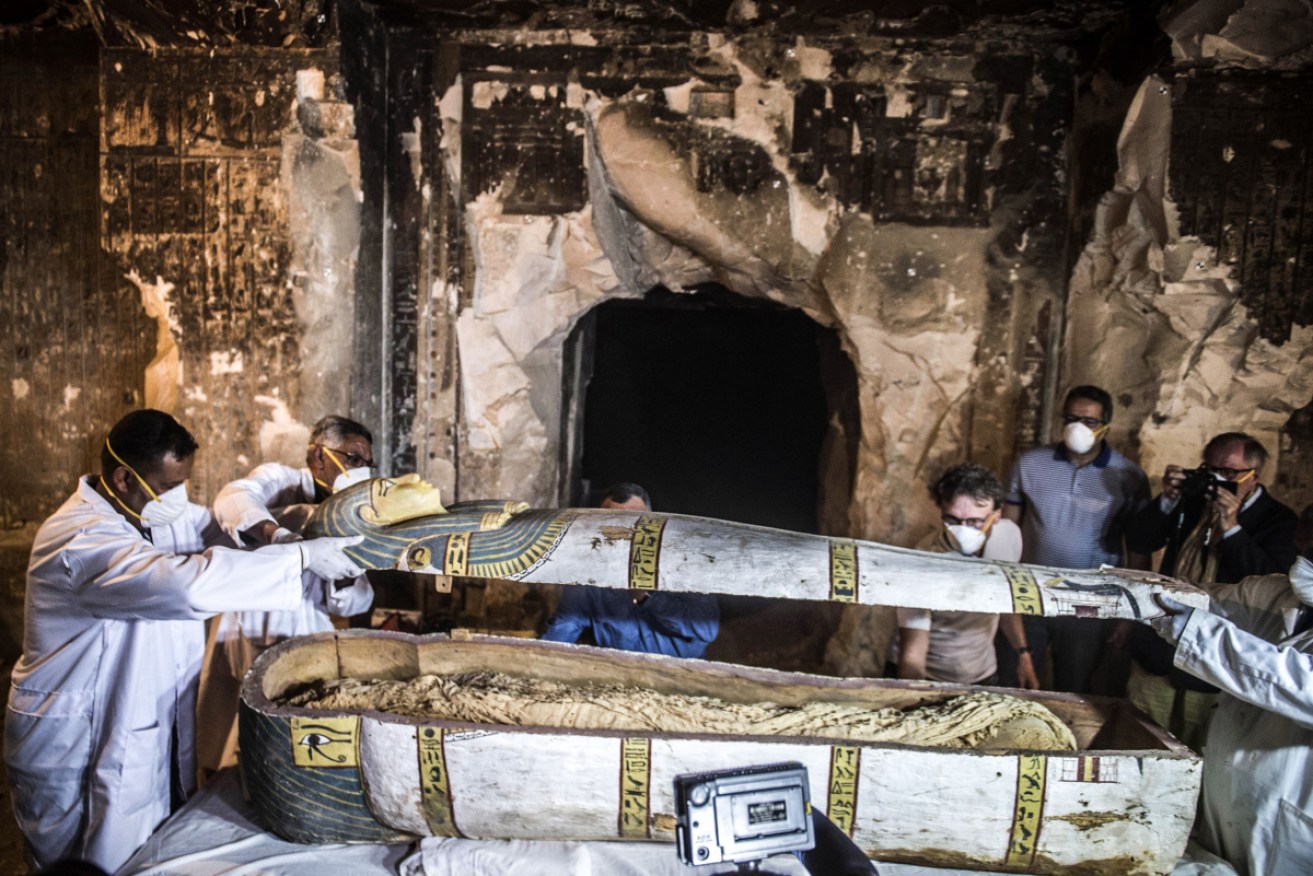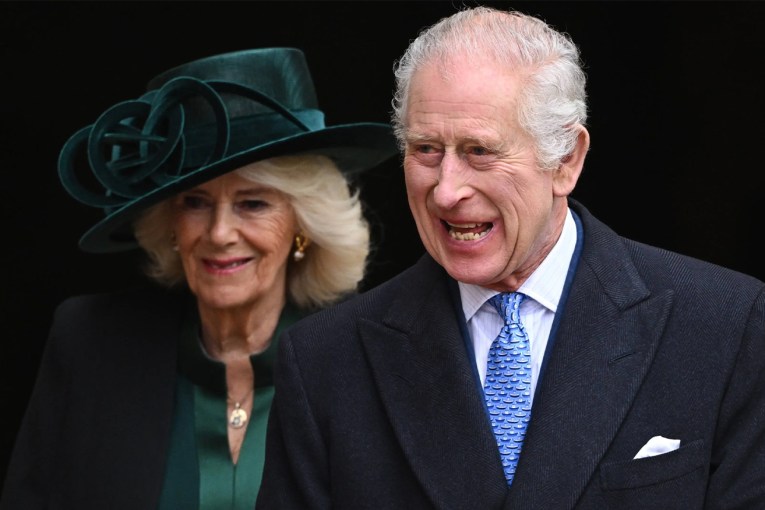Egypt unveils unopened sarcophagus in 3000-year-old tomb

Egypt's antiquities minister and Secretary General of the Supreme Council of Antiquities inspect an intact sarcophagus during its opening at the Al-Assasif necropolis at Luxor. Photo: AFP/Getty
Egyptian authorities have unveiled a well-preserved mummy of a woman inside a previously unopened coffin in Luxor, dating back to more than 3000 years.
The sarcophagus, an ancient coffin, was one of two found earlier this month by a French-led mission in the northern area of Al-Assasif, a necropolis on the western bank of the Nile.
The first one had been opened earlier and examined by Egyptian antiquities officials.
Minister of Antiquities Khaled Al Anani said the tomb originally belonged to the overseer of the mummification shrine from the Ramesside period, around 1200BC, and the tomb’s walls were decorated with colourful paintings of the deceased and his family.

A group of mummies at the site of Tomb TT28, which was discovered by an Egyptian archaelogical mission at Al-Assasif necropolis on the west bank of the Nile. Photo: AFP/Getty
In a further twist, the tomb contained two intact wooden sarcophagi from a much later era, which Mr Al Anani described as “magnificent”.
Photos from inside the tomb showed one of the human-shaped coffins, mostly black but covered inside and out with golden designs, as well as a chamber containing the partially unwrapped, mummified remains.
The tomb was found by an archaeological mission affiliated with the University of Strasbourg in France.

A carved black wooden sarcophagus inlaid with gilded sheets and dating to Egypt’s Late period (7th-4th century BC) in its burial chamber near Luxor. Photo: AFP/Getty
Egypt’s tourism sector was hit hard by political instability after the 2011 uprising and subsequent security crackdown, but began to turn around in 2017, especially in cultural tourism hot spots like Luxor, 700 kilometres south of Cairo.
Once the ancient capital of Egypt, Luxor contains the largest and best-preserved temples from the time of the pharaohs, and the nearby Valley of the Kings is famous as the site of the tomb of King Tutankhamen, discovered in 1922.
-with agencies








